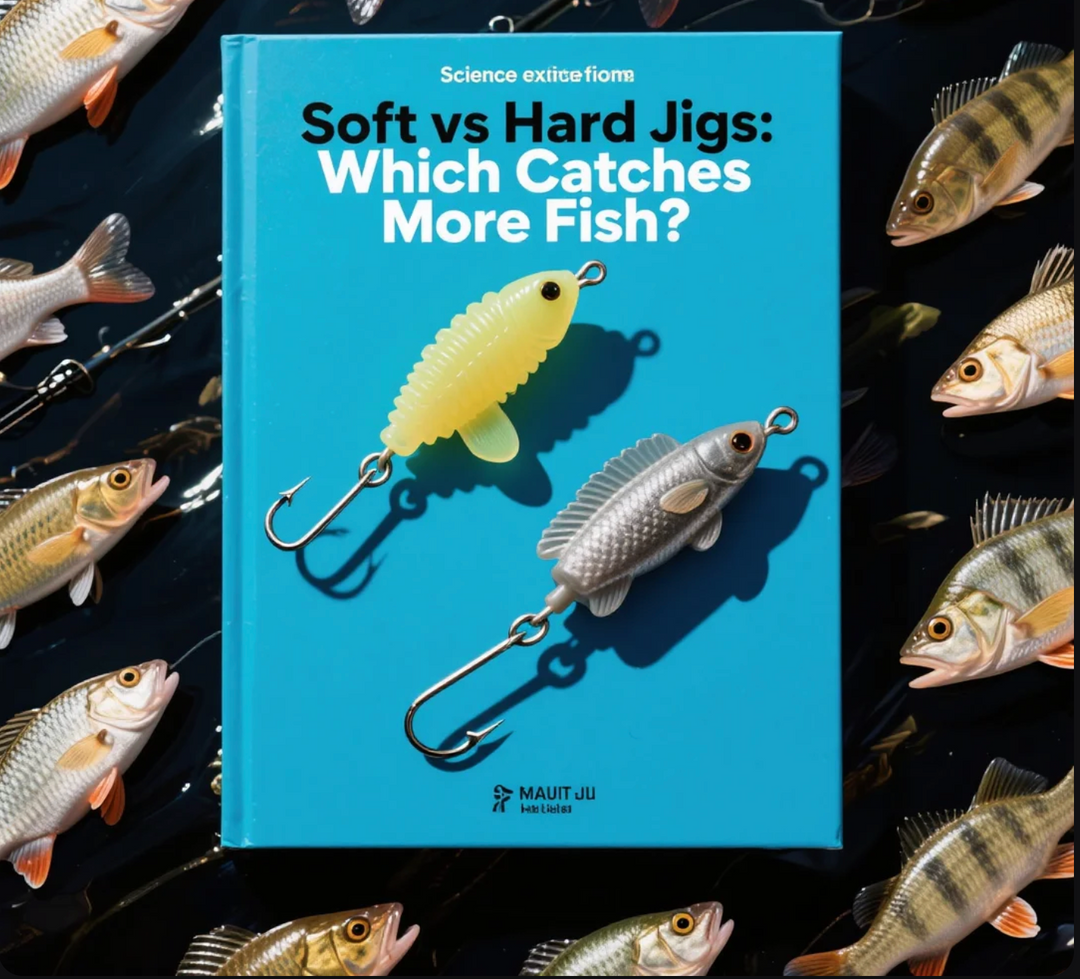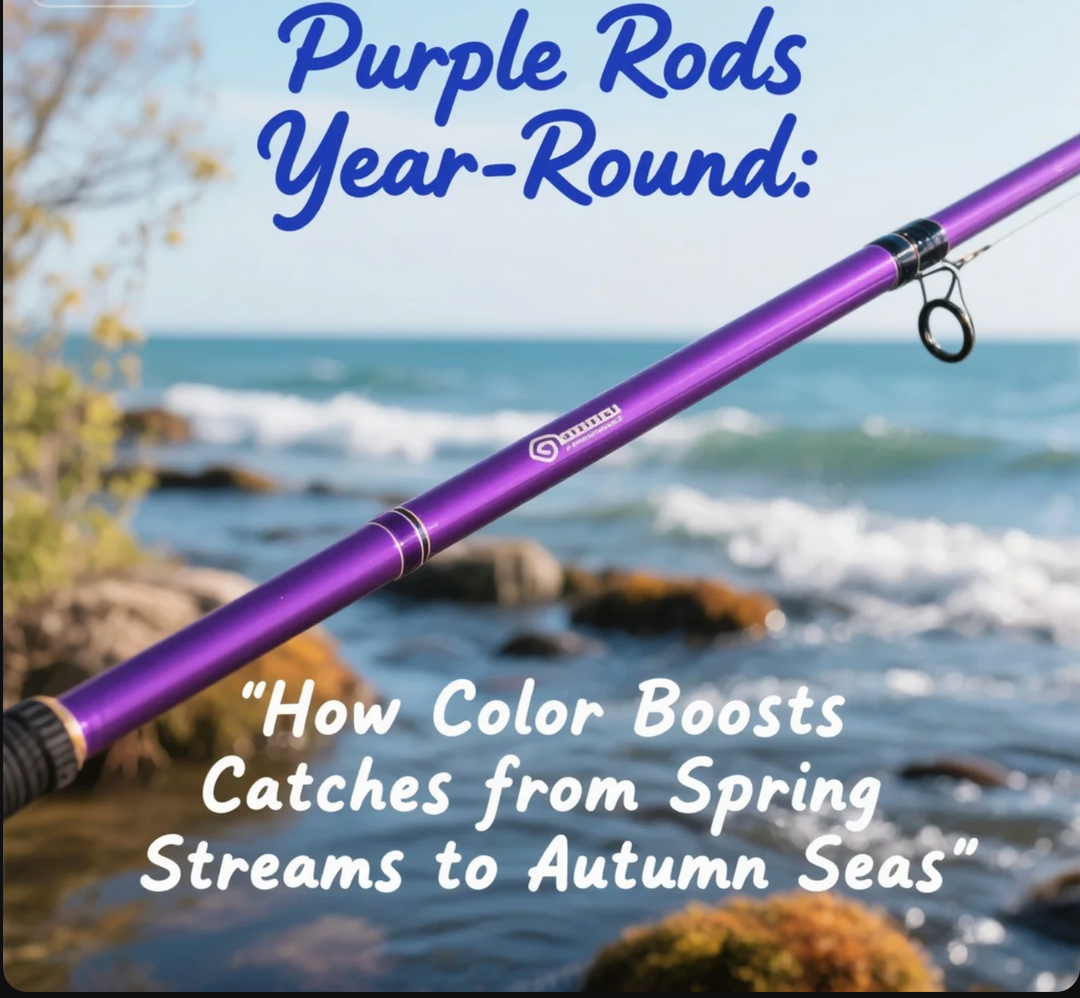Carp Rod Selection Across Seasons: Adapting to Water Conditions from Spring Spawning to Winter Dormancy
Fishing for carp is a year-round pursuit, but mastering it requires understanding how seasonal changes in water conditions—temperature, clarity, flow, and oxygen levels—affect fish behavior and, consequently, the gear you need. From the frenzied activity of spring spawning to the sluggish dormancy of winter, your carp fishing equipment choices must evolve to match the environment. Below, we break down the optimal rods, techniques, and strategies for each season, ensuring you’re always equipped to land more catches.
Spring: Spawning Season—Adapting to Shallow, Warm, and Turbulent Waters
Spring brings rising temperatures (50–65°F/10–18°C) and shallow water habitats as carp prepare to spawn. The water is often murky from runoff, and fish are hyperactive, targeting weedy margins and gravel beds.
- Rod Requirements: Opt for a medium-light to medium-power carp rod (10–12ft) with a sensitive tip to detect bites in thick cover. A fast-action design helps set fishing hooks quickly in turbulent water.
- Bait Strategy: Focus on high-protein baits like boilies (3–5cm), sweet corn, or luncheon meat. Use best carp bait that creates strong scent trails—carp rely heavily on smell in low-visibility conditions.
- Tackle Tips: Pair with a baitrunner reel to handle sudden dives and a mainline of 15–20lb to withstand underwater snags.
Pro Tip: Target pre-spawn fish in deeper margins before they move to shallows—your carp fishing shopaholic toolkit should include both shallow and deep-water fishing setups.
Summer: Hot and Stagnant Waters—Combatting Low Oxygen and Sunlight
Summer heat (70–85°F/21–29°C) can lead to stagnant water, low oxygen levels, and carp seeking deeper, shaded areas or weed-filled channels. Bites are slower, requiring patience and precise presentation.
- Rod Selection: A medium-power carp rod (12–13ft) with a progressive action balances sensitivity and strength. Look for rods with a mid-length handle for better leverage when fishing at distance.
- Bait Adjustments: Use softer baits like paste or pellets (coated in flavor enhancers) that disperse scent gradually. Best carp bait options include pop-ups or method feeders to create attraction zones in oxygen-poor spots.
- Rigging Hacks: Opt for a PVA bag or mesh feeder to present bait naturally in thick weed. A 15–25lb mainline and anti-tangle coating prevent line damage from submerged debris.
Key Insight: Summer mornings and evenings offer the best bite windows—keep your carp fishing supplies organized for quick setup changes as light and temperature shift.
Autumn: Transition Season—Capitalizing on Pre-Winter Feeding Frenzies
As temperatures drop (50–65°F/10–18°C), carp enter a pre-winter feeding frenzy, targeting energy-rich foods to build fat reserves. Water clarity improves, and fish roam open water in search of baitfish and fallen fruits.
- Rod Choice: A heavy-medium to heavy-power rod (13–14ft) with a strong backbone handles larger baits and deeper dives. A longer rod aids in casting to mid-water marks or under tree branches.
- Bait Selection: Go big with meaty offerings like mackerel fillets, tuna chunks, or sweet corn mixed with hemp. Best carp bait here prioritizes bulk and protein to match the fish’s aggressive appetite.
- Rigging Strategy: Use a hair rig with a large bait hook (size 8–10) to secure meat chunks, and a ledger rig with a 20–30lb lead for stability in windy conditions.
Seasonal Bonus: Autumn is ideal for testing new carp fishing equipment—experiment with different bait presentations to see what triggers bites in your local water.
Winter: Dormancy—Surviving Cold, Slow, and Deep
Winter (35–50°F/2–10°C) brings cold water, reduced metabolism, and carp holding in deep, still areas like pits or reed beds. Bites are subtle, requiring precision and the right gear to coax fish into feeding.
- Rod Specifications: A heavy-power carp rod (14–15ft) with a stiff, slow-action delivers power for lifting fish from depth without breaking the line. Shorter handles improve control in tight spaces.
- Bait Necessities: Focus on high-energy, easy-to-digest baits like boilie bombs, garlic-flavored pellets, or live maggots. Small, slow-sinking baits mimic natural food sources in stagnant water.
- Rigging Wisdom: Use a method feeder or bait band rig to keep bait close to the hookbait. A 25–35lb mainline and a bolt rig with a size 4–6 hook prevent deep-hooking in inactive fish.
Essential Gear: Pack extra layers for long sessions and a carp fishing store-quality bite alarm—subtle taps are your only clue to winter bites.
Year-Round Success: Your Carp Fishing Arsenal
Whether you’re tackling spring’s chaos, summer’s patience, autumn’s frenzy, or winter’s stealth, the right carp fishing equipment is your foundation. Remember: adaptability is key. Rotate between light, medium, and heavy rods based on conditions, and always test new best carp bait options to stay ahead of the fish’s preferences.
For expert advice, gear reviews, and seasonal tips, connect with fellow carp fishing shopaholics in online forums or your local fishing tackle shop. With the right setup and a seasonal strategy, you’ll be ready to conquer every water condition and bring home more carp than ever before.
Ready to upgrade your gear? Explore our curated selection of carp fishing supplies today—your next big catch awaits!











Leave a comment